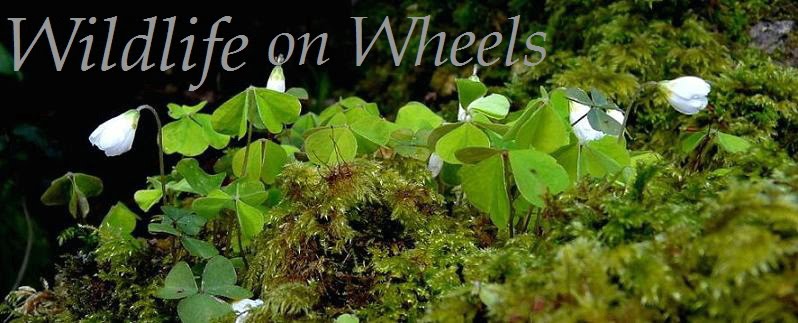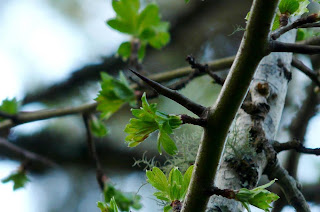Amost all photos have been taken on one side of the hedgerows on the road coming into the village from the East, from Bantry.
Then there are walls which will be qualified hedgerows in due time. Walls where Maidenhair Ferns, the little ones with the tiny leaves, as shown in Elly's little book, has already taken hold on a large scale, among other species like Ground Ivy, Nettle and Navelwort. And various kinds of Moss, of course. So it will be nice to follow this process also.
I will publish a sort of 'map' soon.
Early Dandelions, Taraxacum officinale agg. fade sooner too. There are plenty to follow suit however to please my eye. As does these last starry seeds.

male House Sparrow, Passer domesticus


These lovely little Viola riviniana are growing in every hedgerow around the village here.
The Bug on the Fern is a Shield Bug. The Sloe Bug Dolycoris baccarum


I still have to identify this lovely little Fern, which grows all over the east hedgerows, coming into the village from Bantry.

and a little closer:

Our local Speedwell species comes in two lovely shades of blue.
this is the Ivy-leaf Speedwell, Veronica hederifolia.

and this is Germander Speedwell, Veronica chamaedrys; a specie which is a little more abundant around here than Ivy leaf.

 Great Periwinkle, Vinca major
Great Periwinkle, Vinca major Dandelion, Taraxacum officiniana agg.
Dandelion, Taraxacum officiniana agg. Common Vetch, Vicia sativa ssp. segetalis
Common Vetch, Vicia sativa ssp. segetalis
and last, but not certainly not least, the star of the hedgerow and woodland, alike, the bell(e) of the ball, the Bluebell, Hyacinthoides non-scripta.


Male Blackbird keeping watch.

Blackbird, Turdus Merula
 Barren Strawberry, Potentilla sterilis
Barren Strawberry, Potentilla sterilisI've been absent from the world for some time and I am slowly descending again, I think.(sorry Andrew- no challenge again this time-read on-)
I've mentioned Elly's battle with Multiple Myeloma,(MM) the cancer of plasmacells in her bones before. Recently they discovered that the battle was over and that it was just trying to make her as comfortable as possible in those last days. Her immune system was down also, and so she caught pneumonia just before Easter. She died peacefully in the night of Easter Saturday/Sunday.
And even if I had been able to travel down to Holland, I could only start trying to organise a bus on Tuesday with the cremation being on Friday. And if you consider that 2 years ago it took me at least 4 days to organise a bus to the airport in Cork, forget it. We have a EU funded mini bus service here, Bantry Rural Transport,, a trip to Cork however, cost them a half day before being back in Bantry and thus many people being let down. In short, these things need to be arranged in time.
But with the chronic pain already taking over on Tuesday, my first time to take a breather on the road, it was very clear that I would not have made it to Cork, let alone Schiphol. (Amsterdam)
A few days after I'd heard the news on my mum's death I went out. onto the backroad down to the church of Ireland, a road which I had previously deemed unsafe, as the road has minimised so much that I have just a small strip of deeply potholed, surface to ride on which does not really work when your wheels are just a tat wider than the strip! The 'sides' of the road have sloped so much that in a short while my wheels will be turning in thin air with the underside stuck on the "strip" !
Anyway, I wanted to see the Blackthorn in flower here, and I had shot many Blackthorn pictures last year along this road. This year's photos which I will post later. (I'm glad I got text and these photos together as my mind is still apart from my physical self.)
A very mixed up post, and yet a good day to start returning to the planet, it being earthday!























